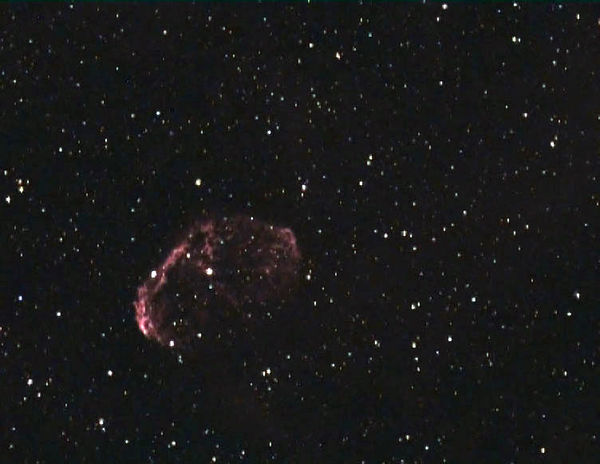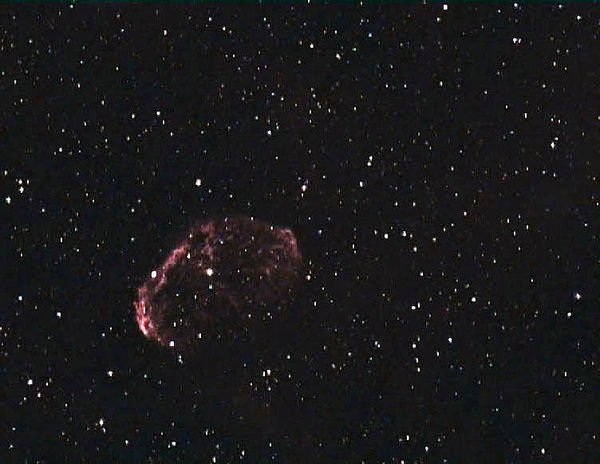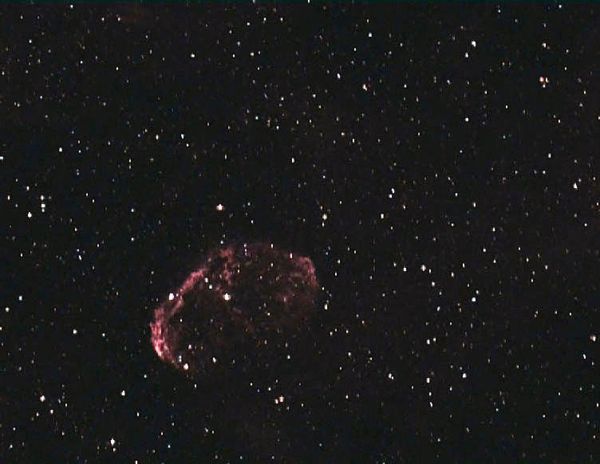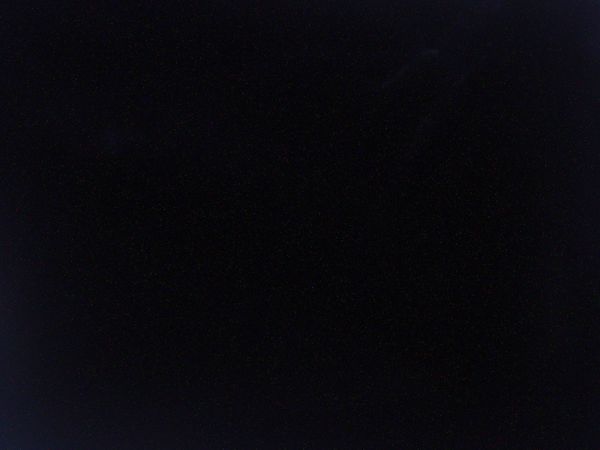M13, Hercules Cluster tonight
Jun 17, 2017 12:37:34 #
Humm, I have no like for Atik. Support takes forever. I bought the 383L....had nothing but problems and no support from them. That was my last purchase from them, period. I have not seen too many pics from any Atik camera on Astrobin that has been encouraging when used with scopes that I have....I think I could do as well using an iphone. The cooling system is a disaster - as I mentioned, every two shoots you have to bake the desiccant tablets and let them dry out as well as camera for 48 hours. It takes two weeks to get an email answer from support. Then they always have another question....when answered immediately, takes another two weeks to hear a reply. I try to anticipate any question I may have in every email.......but they don't read them. They still reply with a question (one I have answered) as if they didn't read my email. I told them i was going to express my frustration on the Astro forums as well as their FB page if they couldn't find support. They sent me some more desiccant tablets to try.
I know I have a bad camera and not all ATIKs are this bad...otherwise the complaints would be crazy. But they do not offer help so 2300 dollars later......sorta stuck. I can't sell on EBAY even at low price as I would feel rotten knowing someone would be getting a lemon. I did listen to another astro-imager rant and rave on the Astro Imaging channel as he was frustrated with his camera and service - he had a different camera and a different problem but the service issues sounded similar to mine.
Were it me....and I didn't want to spend alot of money....I would buy a second hand Canon camera (modded) I see them for sale for under 500 - even new models.
http://www.ebay.com/itm/Full-Spectrum-IR-Canon-EOS-1200D-18MP-DSLR-Digital-Camera-Body-Only-T5-Astro/182523409734?_trksid=p2047675.c100005.m1851&_trkparms=aid%3D222007%26algo%3DSIM.MBE%26ao%3D2%26asc%3D41376%26meid%3D50c7bb2133e1478793810b3399980e4a%26pid%3D100005%26rk%3D6%26rkt%3D6%26mehot%3Dlo%26sd%3D182622617151
I would sure look around and get some opinions on the forums before heading in their direction. Also, look at images that people put online with the Atik model you have an interest in......keep in mind, when people upload an image for the world to see, unless they are posting an issue image, they are putting their best work up. IMHO.
I know I have a bad camera and not all ATIKs are this bad...otherwise the complaints would be crazy. But they do not offer help so 2300 dollars later......sorta stuck. I can't sell on EBAY even at low price as I would feel rotten knowing someone would be getting a lemon. I did listen to another astro-imager rant and rave on the Astro Imaging channel as he was frustrated with his camera and service - he had a different camera and a different problem but the service issues sounded similar to mine.
Were it me....and I didn't want to spend alot of money....I would buy a second hand Canon camera (modded) I see them for sale for under 500 - even new models.
http://www.ebay.com/itm/Full-Spectrum-IR-Canon-EOS-1200D-18MP-DSLR-Digital-Camera-Body-Only-T5-Astro/182523409734?_trksid=p2047675.c100005.m1851&_trkparms=aid%3D222007%26algo%3DSIM.MBE%26ao%3D2%26asc%3D41376%26meid%3D50c7bb2133e1478793810b3399980e4a%26pid%3D100005%26rk%3D6%26rkt%3D6%26mehot%3Dlo%26sd%3D182622617151
I would sure look around and get some opinions on the forums before heading in their direction. Also, look at images that people put online with the Atik model you have an interest in......keep in mind, when people upload an image for the world to see, unless they are posting an issue image, they are putting their best work up. IMHO.
Jun 17, 2017 22:04:14 #
For Sonny, I think that Photoshop Elements can do High Pass sharpening. But I don't use PSE and can't confirm.
Believe me, I wouldn't either, given a choice...
Baby steps here, baby steps....

Thank You, Jim!
Believe me, I wouldn't either, given a choice...
Baby steps here, baby steps....


Thank You, Jim!
Jun 17, 2017 22:48:12 #
SonnyE wrote:
For Sonny, I think that Photoshop Elements can do High Pass sharpening. But I don't use PSE and can't confirm.
Believe me, I wouldn't either, given a choice...
Baby steps here, baby steps....

Thank You, Jim!
Believe me, I wouldn't either, given a choice...
Baby steps here, baby steps....


Thank You, Jim!
Just checked, and it can:
http://www.essential-photoshop-elements.com/high-pass-sharpening.html
And by the way, I swap steps 3 & 4 so I can watch the effect on the image as I slide the radius slider rather than watching the step 3 screen as shown. This is important with stars since the rules for sharpening stars are not the same rules as sharpening cats.
Jun 18, 2017 21:10:26 #
JimH123 wrote:
This is a 15 sec capture of the famous M13, Hercules Cluster. Consisted of 40 Lights, 21 darks and 13 flats. This was captured using the Olympus EM5ii modified to be full spectrum, crop factor 2.0x, and the Explore Scientific 102ed, focal length of 710mm. Tried 30 sec, and the core was saturating. Backed off to 15 sec. You can also see a small galaxy towards the lower left -- NGC 6207.
Very nicely done Jim H. I am so glad you didn't blow out the core.
Craig
Jun 19, 2017 11:18:58 #
JimH123 wrote:
Just checked, and it can:
http://www.essential-photoshop-elements.com/high-pass-sharpening.html
And by the way, I swap steps 3 & 4 so I can watch the effect on the image as I slide the radius slider rather than watching the step 3 screen as shown. This is important with stars since the rules for sharpening stars are not the same rules as sharpening cats.
http://www.essential-photoshop-elements.com/high-pass-sharpening.html
And by the way, I swap steps 3 & 4 so I can watch the effect on the image as I slide the radius slider rather than watching the step 3 screen as shown. This is important with stars since the rules for sharpening stars are not the same rules as sharpening cats.
 Sharpening cats...
Sharpening cats... 
Yep, so far to go for me.... I don't do any deliberate sharpening myself. I don't usually like the effect.
My latest GIF file really shows the bad pixels from my camera. So I'm seeing what I can do about mapping those for removal. Filtering the noise just turns them white, then I have stars moving, and star dust on my foreground not moving.
Baby steps, baby steps....

Jun 19, 2017 15:40:00 #
SonnyE wrote:
img src="https://static.uglyhedgehog.com/images/s... (show quote)
Would you consider shooting multiple images of lights, darks and biases. Then stacking them. That's the way I removed my hot and cold pixels.
Craig
Jun 19, 2017 19:33:09 #
CraigFair wrote:
Would you consider shooting multiple images of lights, darks and biases. Then stacking them. That's the way I removed my hot and cold pixels.
Craig
Craig
Weeeellllll, I might be talked into it....

Well you see the GIF file below, you'll see the G-wizz 3 gives a lot of hotties to try and pluck off.
It's dark and sinister down here in the Post Processing subterranean cavern.

Jun 19, 2017 20:19:36 #
JimH123 wrote:
Just checked, and it can:
http://www.essential-photoshop-elements.com/high-pass-sharpening.html
And by the way, I swap steps 3 & 4 so I can watch the effect on the image as I slide the radius slider rather than watching the step 3 screen as shown. This is important with stars since the rules for sharpening stars are not the same rules as sharpening cats.
http://www.essential-photoshop-elements.com/high-pass-sharpening.html
And by the way, I swap steps 3 & 4 so I can watch the effect on the image as I slide the radius slider rather than watching the step 3 screen as shown. This is important with stars since the rules for sharpening stars are not the same rules as sharpening cats.
Hey Jim,
I think I got success with my first try doing that. Now, when I do it a hunnerd times I might learn it...

But I have a batch of the Crescent Nebula I've been dabbling with from 6-16-17, and I (very conservatively) followed that tutorial as near as I could (because, of course, my PSE layout is different) but stumbled through.
I took a 30 image sequence. Exported the FIT files to JPG's, then play with them in PSE 12. But when you download the GIF file, the hot pixels are quite obvious. But this mild sharpening I like on the first attempt! I could live with this.
Baby steps, baby steps.... Thanks Jim!
Here some examples:
Before applying layer...

(Download)
After applying layer... Image 28

(Download)
GIF file. Holy Crackers! Here you can see the hot pixels, because they stay stationary.

(Download)
Jun 19, 2017 20:26:27 #
If I could take off that layer of hot pixels, wouldn't that make an interesting, twinkling star GIF file? 
I thought I had seen a way to remove hot pixels, but can't recall where.


I thought I had seen a way to remove hot pixels, but can't recall where.


Jun 19, 2017 21:07:04 #
SonnyE wrote:
Hey Jim, br I think I got success with my first tr... (show quote)
The best way to get rid of the hot pixels is to shoot some darks with the lens cap on and to then process the lights and the darks in DSS.
As an FYI, I am attaching one dark file taken with the Olympus EM5ii for 60sec at ISO 1600. You will have to really blow it up to see the stuck pixels. I see red and blue and white. I am guessing that the white is really from green pixels of which there are as many greens as blue and red combined. There are also fainter pixels that probably are on their way to being hot pixels if I were to expose for more than 60 sec.
Now this camera has a way to learn stuck pixels, but it only does that for short shutter times and I have done the pixel calibration, and with shorter shutter times, you see zero stuck pixels. But this is 60 sec and as time goes by and based on the ISO level, some pixels start to show their true colors. I also see as I step through many darks using Faststone Image Viewer, that I don't see pixels coming and going. The same hot pixels in the first seem to be there in the last.
The good news is that after running the lights and darks through DSS, that this hot pixel mess is GONE in the final image.
By the way, I need to have Long Exposure Noise Reduction turned OFF to get all these stuck pixels. And the shorter the exposure time, the fewer of them that I get and the longer the exposure, the more of them that I get.
If Long Exposure Noise Reduction is turned on, the camera takes two shots, figures out the stuck pixels and noise, and then produces a clean image. The experts always say to not use Long Exposure Noise Reduction and the results will be better.
This image was taken with the Olympus EM5ii and I used Silent Electronic Shutter. Olympus allows the Long Exposure Noise Reduction to be turned off in this mode. But my Sony A6300 does not allow Long Exposure Noise Reduction to be turned off in Silent Electronic Shutter Mode with the result that if you shoot darks, they look really, really clean! And are probably not of much use. But the lights are clean too. For Sony, the rules are different if you switch to mechanical shutter, and you can switch off Long Exposure Noise Reduction.
Another issue I looked at is whether of not silent shutter mode reduces dynamic range. Some cameras reduce from 12-bits to 10-bits when using silent mode. This site here did some testing and finds that the EM5ii does not seem to scale things back, while at the same time showing the Panasonic GH4 does scale back the dynamic range in silent shutter mode.
http://m43photo.blogspot.com/2015/04/e-m5-ii-shutters.html
Also was able to find that the Sony A6300 does have lower dynamic range in silent electronic shutter, thus so far it seems like the EM5ii is a better choice for Astro images.
I also tried to get a list of what cameras can capture in 14-bit RAW and from what I can find, it is only the end end cameras with the really large mega Pixel counts. I think this leaves out all APS-C and m43 type cameras.
Jun 19, 2017 22:51:24 #
JimH123 wrote:
The best way to get rid of the hot pixels is to shoot some darks with the lens cap on and to then process the lights and the darks in DSS.
I have some old dark files, but will make some fresh ones tonight.
I can probably run some while doing other things, like my polar alignment routine. Or just do a sequence run of dark files to build some libraries.
Fumble bumble, bumble fumble, fumbum um drumbumfumble...
I vill be bach!
Jun 19, 2017 22:59:18 #
SonnyE wrote:
I have some old dark files, but will make some fresh ones tonight.
I can probably run some while doing other things, like my polar alignment routine. Or just do a sequence run of dark files to build some libraries.
Fumble bumble, bumble fumble, fumbum um drumbumfumble...
I vill be bach!
I can probably run some while doing other things, like my polar alignment routine. Or just do a sequence run of dark files to build some libraries.
Fumble bumble, bumble fumble, fumbum um drumbumfumble...
I vill be bach!
A library of dark files will work. Just need to keep track of exposure time and ISO. Temperature has effect too. The hotter the sensor, the more hot pixels there are.
In the case of CCD camera, you don't have ISO, but you do have other settings to keep track of.
Jun 20, 2017 01:52:20 #
JimH123 wrote:
A library of dark files will work. Just need to keep track of exposure time and ISO. Temperature has effect too. The hotter the sensor, the more hot pixels there are.
In the case of CCD camera, you don't have ISO, but you do have other settings to keep track of.
In the case of CCD camera, you don't have ISO, but you do have other settings to keep track of.
Oh, so would it be advisable to let it run at ambient? The G3 has the amazing temperature reduction of 10 degrees C. Hardly worth writing home about, not worth the stamp.

I gathered up about 8 500s Dark images and surprise surprise, they were peppered with hot pixels. So I'll give them a run tomorrow.
I may run off a bunch more if the camera stops crashing. Pulling in a sequence of the Pinwheel Galaxy tonight. A few false starts, and a sputtery start tonight. But even did a Polar Alignment, to get things Hunky-Dory again. Seems to have worked.

Maybe ready to run for a while...

Jun 21, 2017 18:52:58 #
SonnyE wrote:
Hey Jim, br I think I got success with my first tr... (show quote)
That's cool and very telling Sonny.
Craig
Jun 22, 2017 12:34:09 #
CraigFair wrote:
That's cool and very telling Sonny.
Craig
Craig
Thank You, Craig!
I would love to cut the hot pixels out. Because the twinkle effect the GIF makes appeals to me.
Sonny still kan't stack.
I wonder what a real camera can do....
If you want to reply, then register here. Registration is free and your account is created instantly, so you can post right away.



